Last Chance to Catch NYC's Holiday Notalgia Train
We met the voices of the NYC subway on our nostalgia ride this weekend!


Even now, more than twenty years after his death, Keith Haring remains a symbol of New York City’s street art scene. Haring came to New York to study at the School of Visual Arts in 1978 and quickly immersed himself in the city’s alternative art scene, befriending Jean-Michel Basquiat, Kenny Scharf and Andy Warhol. While he experimented with video, installation, collage and performance art, his true talent lay in his line paintings.
Over time, he came to be known for his distinctive style using bold, heavy lines, simple shapes and figures, and bright colors. In the ’80s, Haring gained international recognition, but he never stopped giving back to the community, creating many public murals around the world. He died in 1990 in his apartment in Greenwich Village due to complications from AIDS. Since Sunday, May 4 is his birthday, we’re looking at the work Haring left behind for New Yorkers to enjoy. Had he lived, he would have been turning 56 years old.
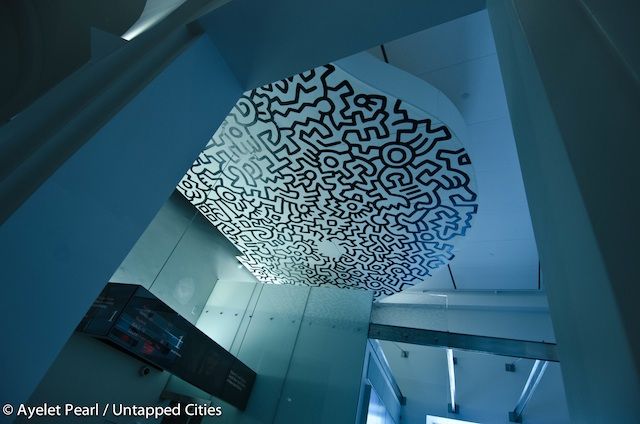
In April 1986, Haring opened the Pop Shop in Soho, where he sold t-shirts, toys, posters, buttons and magnets with his designs. Though the shop was criticized in the art world, Haring saw it as a way to make his work accessible to a wide audience that couldn’t afford to buy works of art. He painted an abstract white on black mural in the shop’s interior. When the store closed in 2005, the Haring Foundation donated a part of its mural to the New York Historical Society, where it now hangs above the admissions desk.
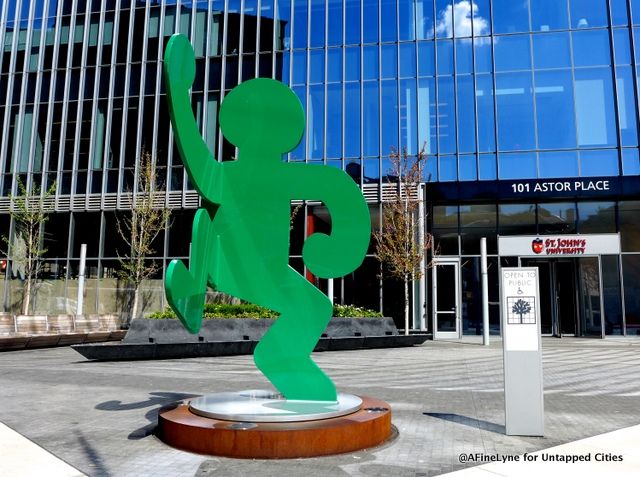
This 1989 piece, entitled “Self Portrait” arrived to 51 Astor Place in December 2014, in tandem with a Jeff Koons rabbit in the lobby of the building.
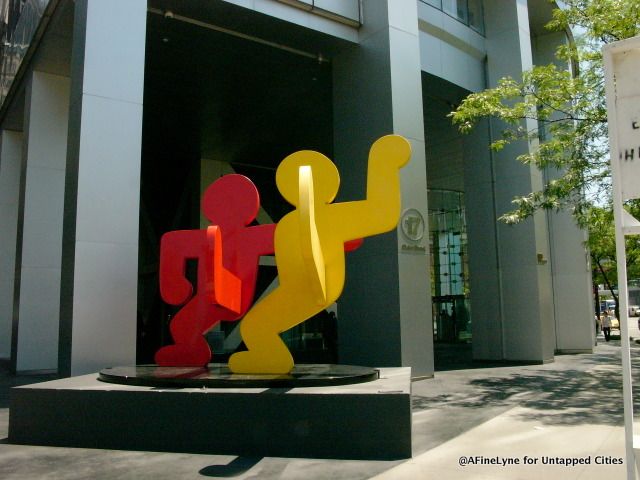
Also from 1989, the “Two Dancing Figures,” are at 17 State Street downtown next to Battery Park.
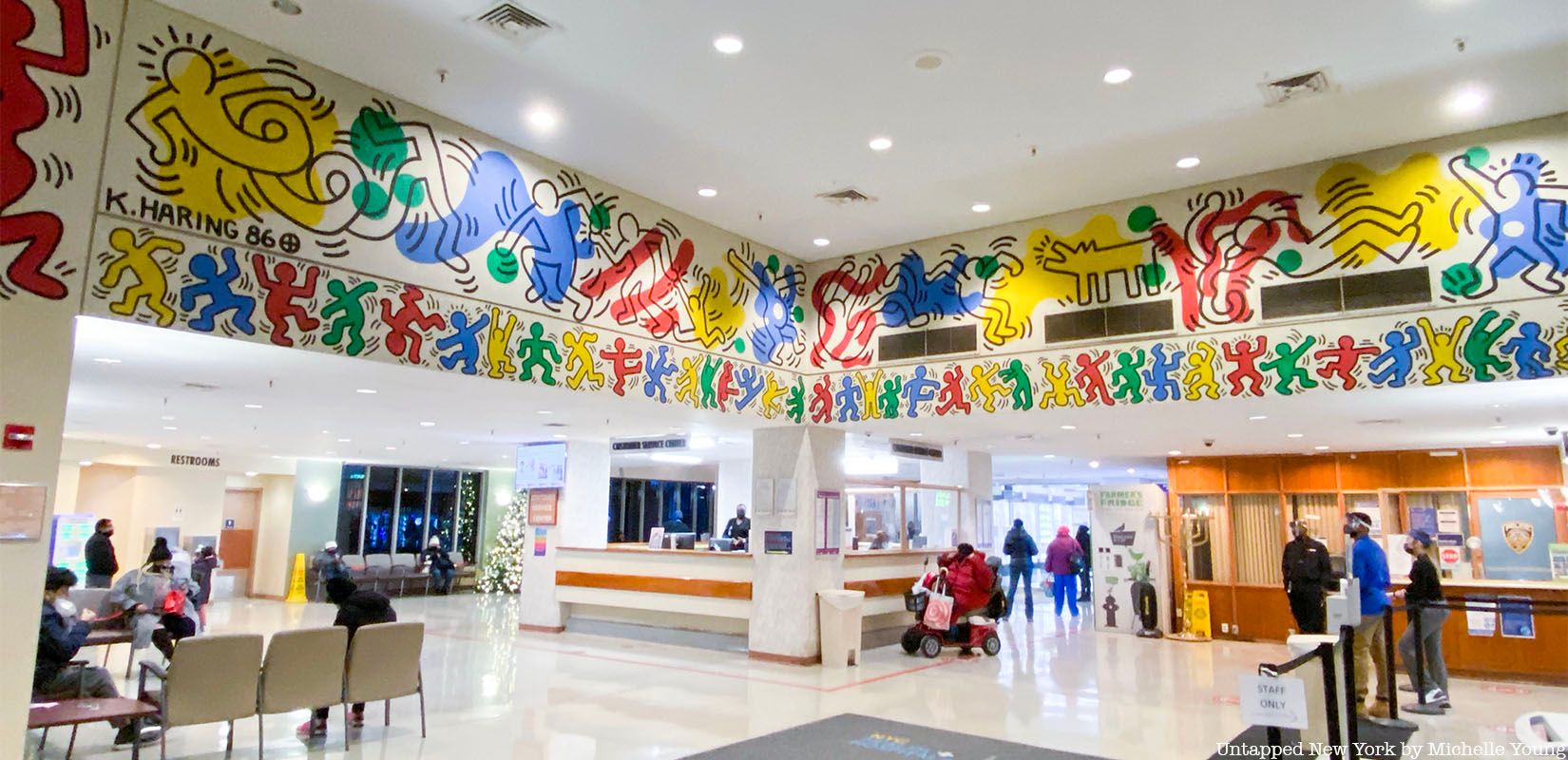
Haring created this 700 foot-long mural over the course of a week in 1986. It was a personal gift to the hospital, which Haring admired for its dedication to pediatric AIDS research and treatment. Haring camped out at the Bed-Stuy hospital, and during breaks he signed autographs and did little drawings on t-shirts and poster boards for anyone who asked. The brightly colored, exuberant figures shepherd patients through the main lobby and down two corridors.

Haring’s triptych altarpiece “The Life of Christ” is the last work he completed, just two weeks before he died. It was his first time working in clay, which he carved with a loop knife. The subject matter is uncharacteristically religious for Haring: Christ on the cross, hands reaching toward heaven, a baby lifted up by a pair of hands, a fallen angel, and the resurrection. The altarpiece, which was cast in bronze and covered in gold leaf, was dedicated at Haring’s memorial service at the Cathedral of Saint John the Divine. It is part of an edition of nine, one of which is permanently installed at the Saint-Eustache Church in Paris.
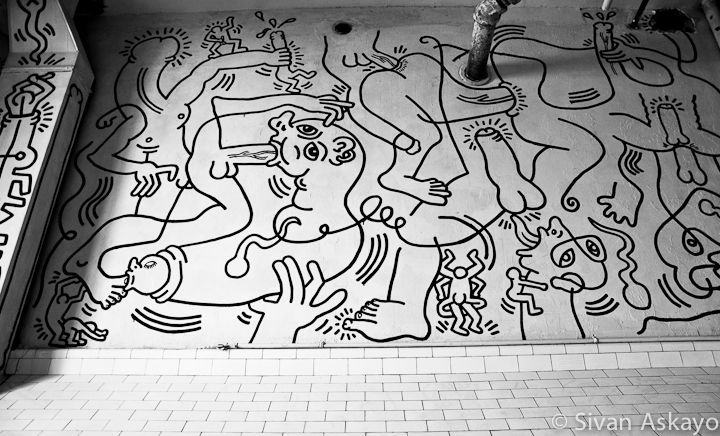
In 1988, curator Rick Barnett organized a site-specific exhibition to commemorate the 20th anniversary of the Stonewall riots. Fifty artists decorated the walls, doors, and other surfaces of the LGBT Community Center in Greenwich Village. Haring was given free reign of the second floor men’s restroom and told he could create whatever he wanted. Though Haring rarely titled his work, he called this mural Once Upon a Time, “reflecting back on the pre-AIDS period,” according to Robert Woodworth, Director of Capital Projects at the Center.
The Center is currently undergoing renovations and the mural is closed off and protected. When the work is completed, the space will be used as a conference room and visitors will once again be able to see the mural upon request.

Haring painted this 170 foot-long mural on the wall that connects the Carmine Street Pool to the James J. Walker Park handball court in August, 1987. Haring typically created work based on his inspiration of the moment—not prior sketches. For this mural, he incorporated aquatic colors and motifs, like fish, dolphins, and mermaids. The mural was restored by the Keith Haring Foundation in 1995.
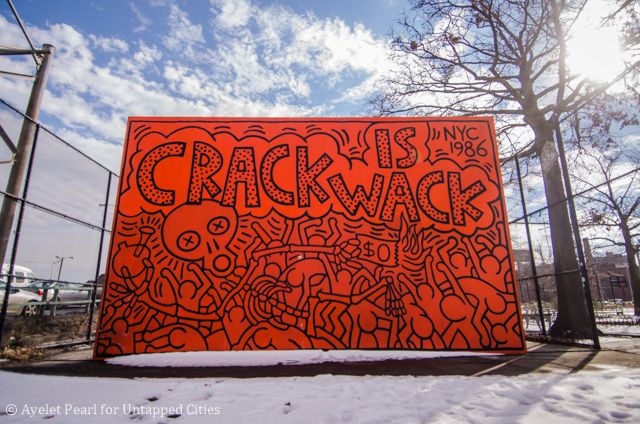
Haring painted this huge mural on the handball court at East 128th Street and Harlem River Drive in 1986 as response to the city-wide crack-cocaine epidemic of the late ’80s. Though Haring painted it without city permission, it was quickly put under the protection of the Parks Department, which has conserved it and restored it in 2007. “Crack is Wack” is one of Haring’s most easily accessible public works.
Updated: Keith Haring’s Crack is Wack mural will not be available for viewing during reconstruction of the Harlem River Drive, expected to be completed by the end of 2019. It is currently enclosed by a protective shelter.

In the summer of 2015, Plaza 33 was installed as a temporary pedestrian passageway next to Penn Station. Along with a Roy Lichtenstein pop art sculpture, reminiscent of a work inside the Tweet Courthouse downtown, a Keith Haring sculpture was installed.
Next, see the Top 10 NYC Street Art Pieces of 2015 so far.
To see a list of all of Keith Haring’s existing public works, head over to the Haring Foundation. Get in touch with the author @lauraitzkowitz.
Subscribe to our newsletter